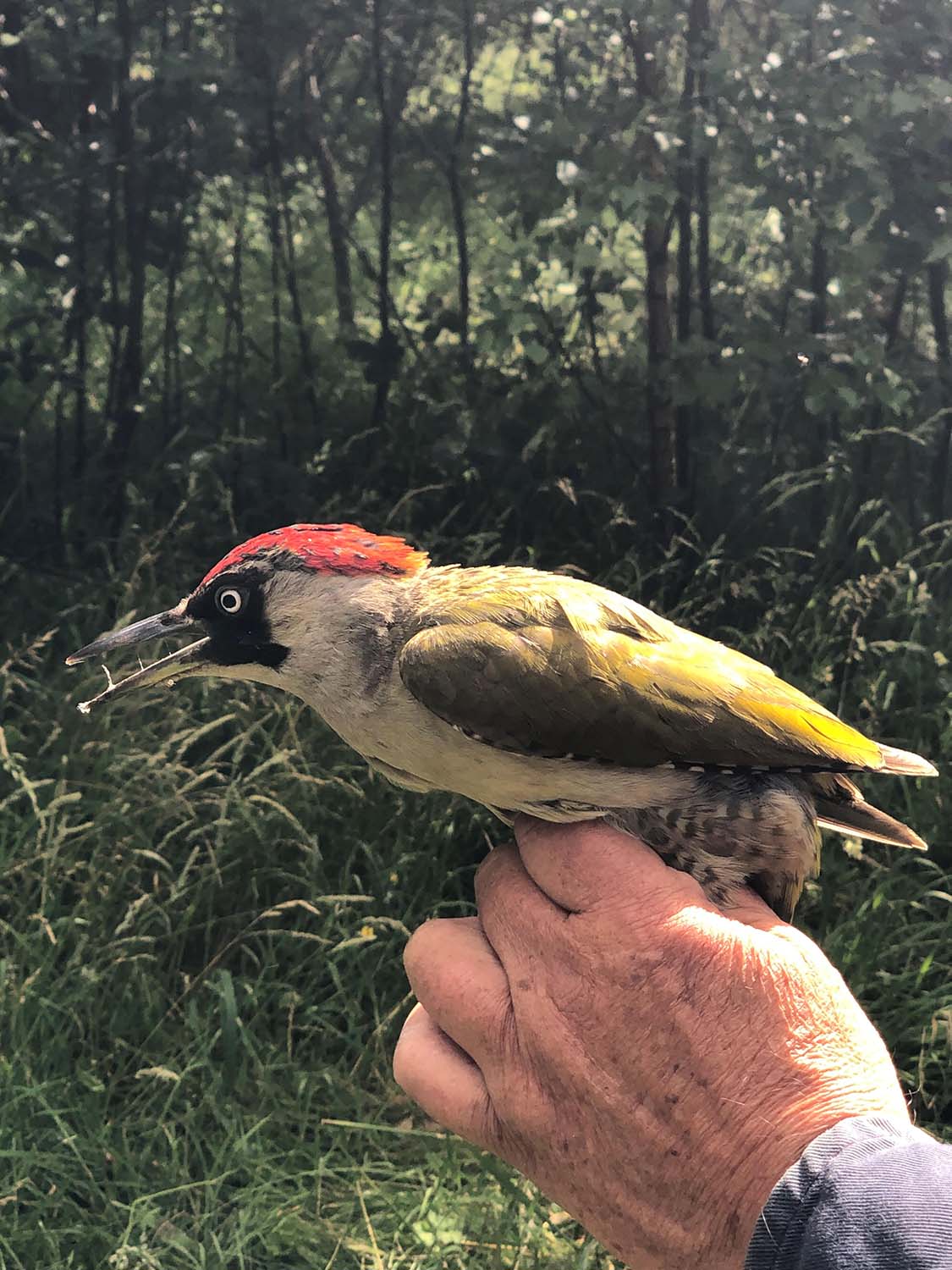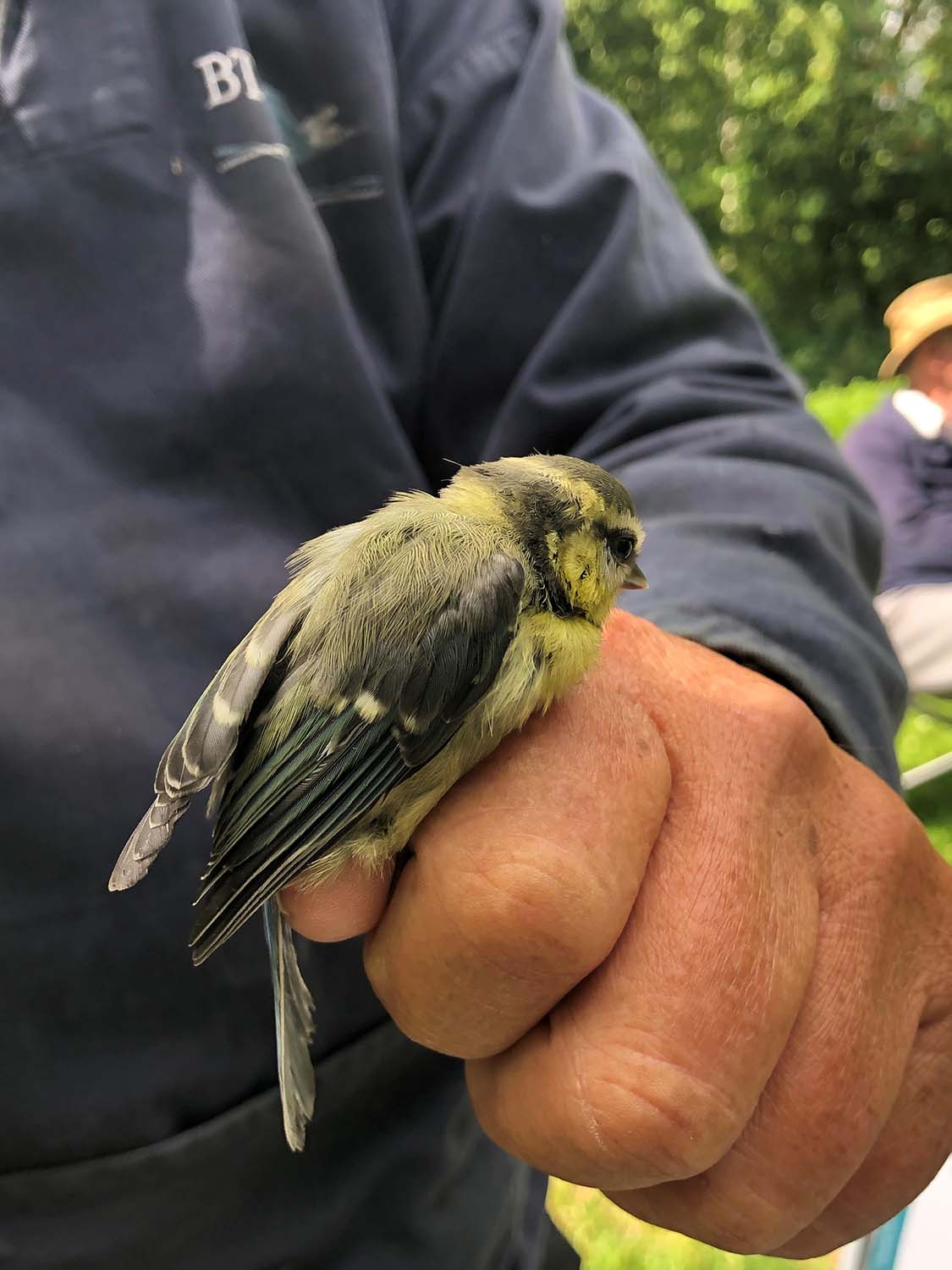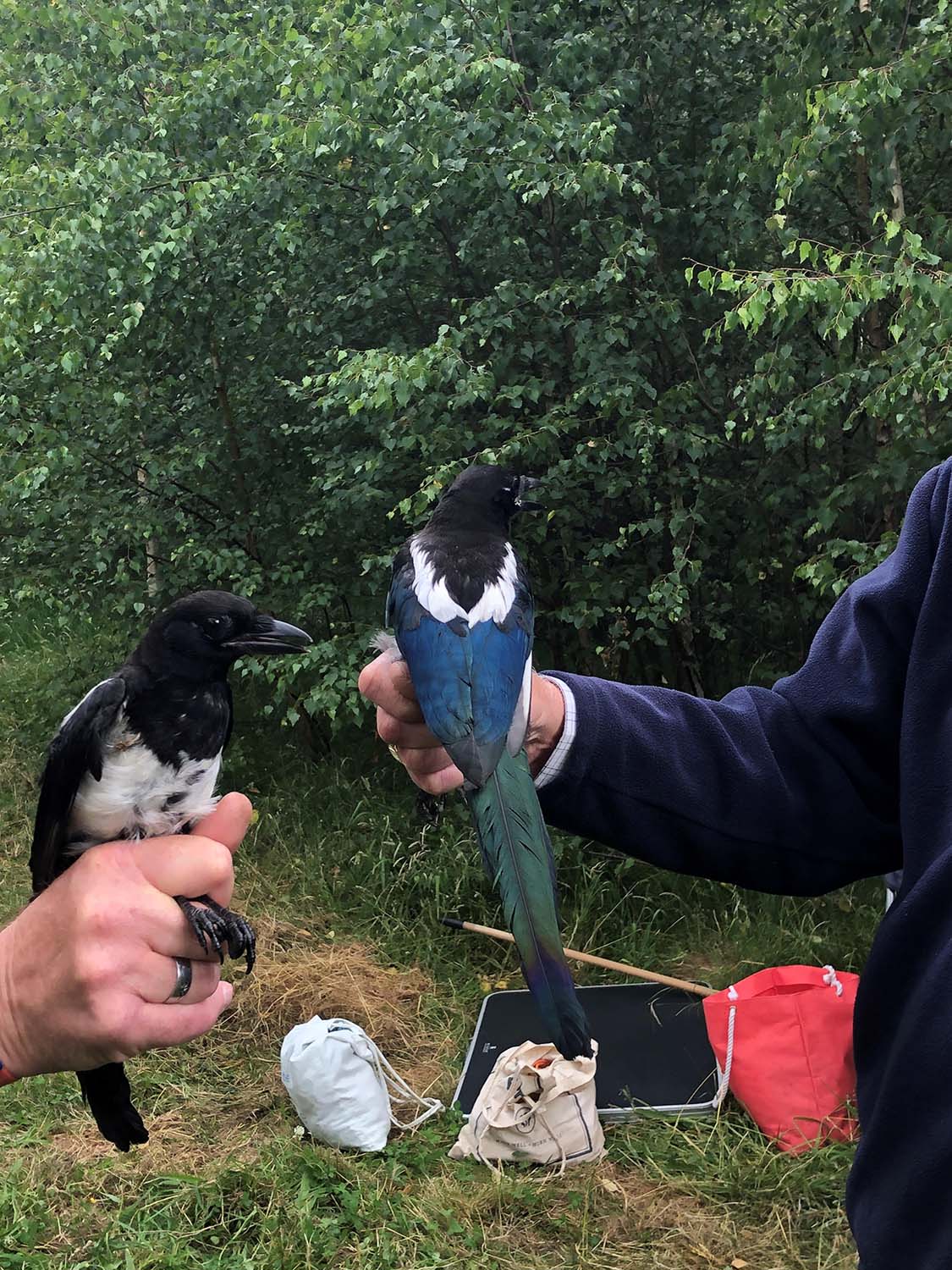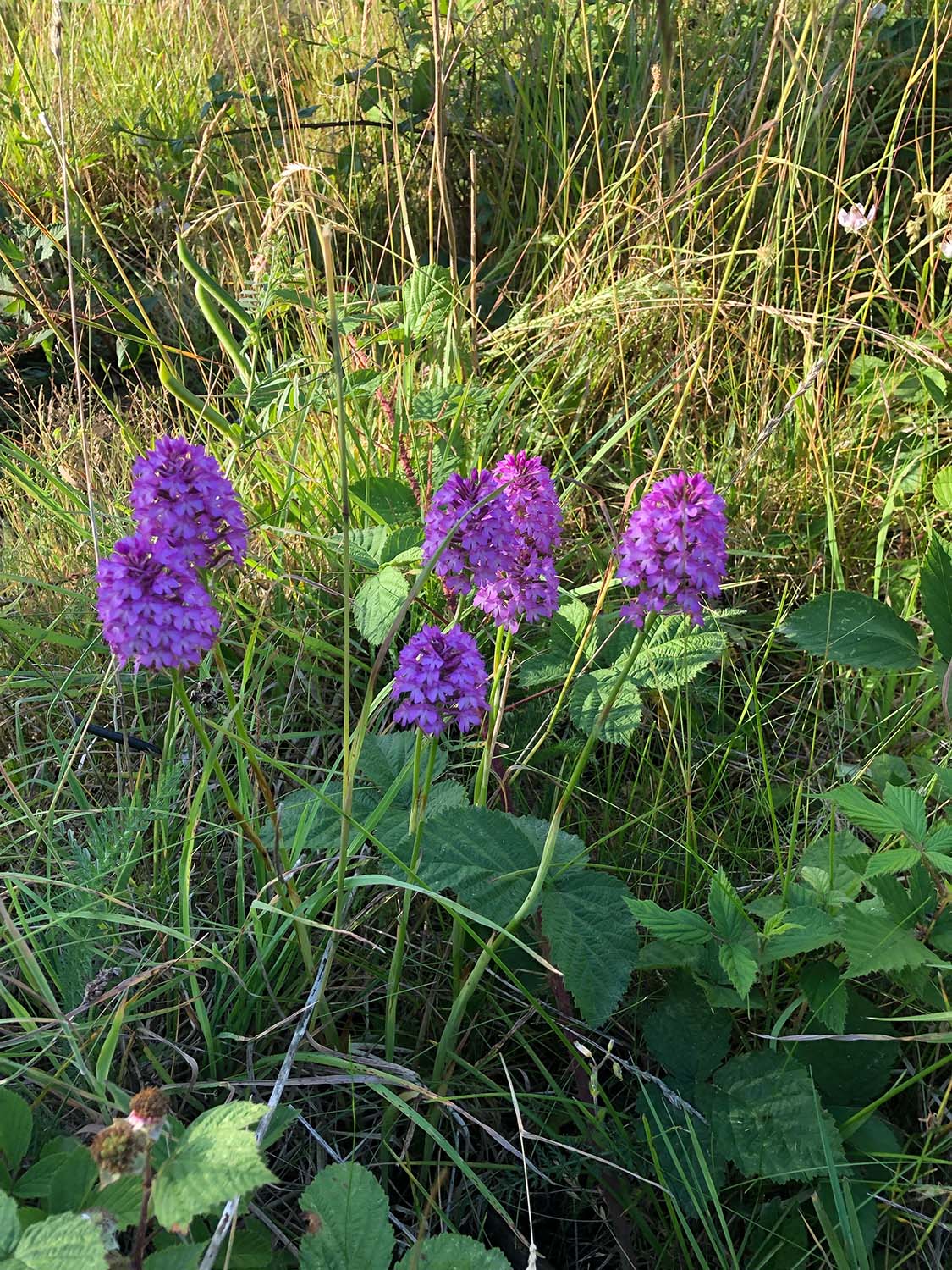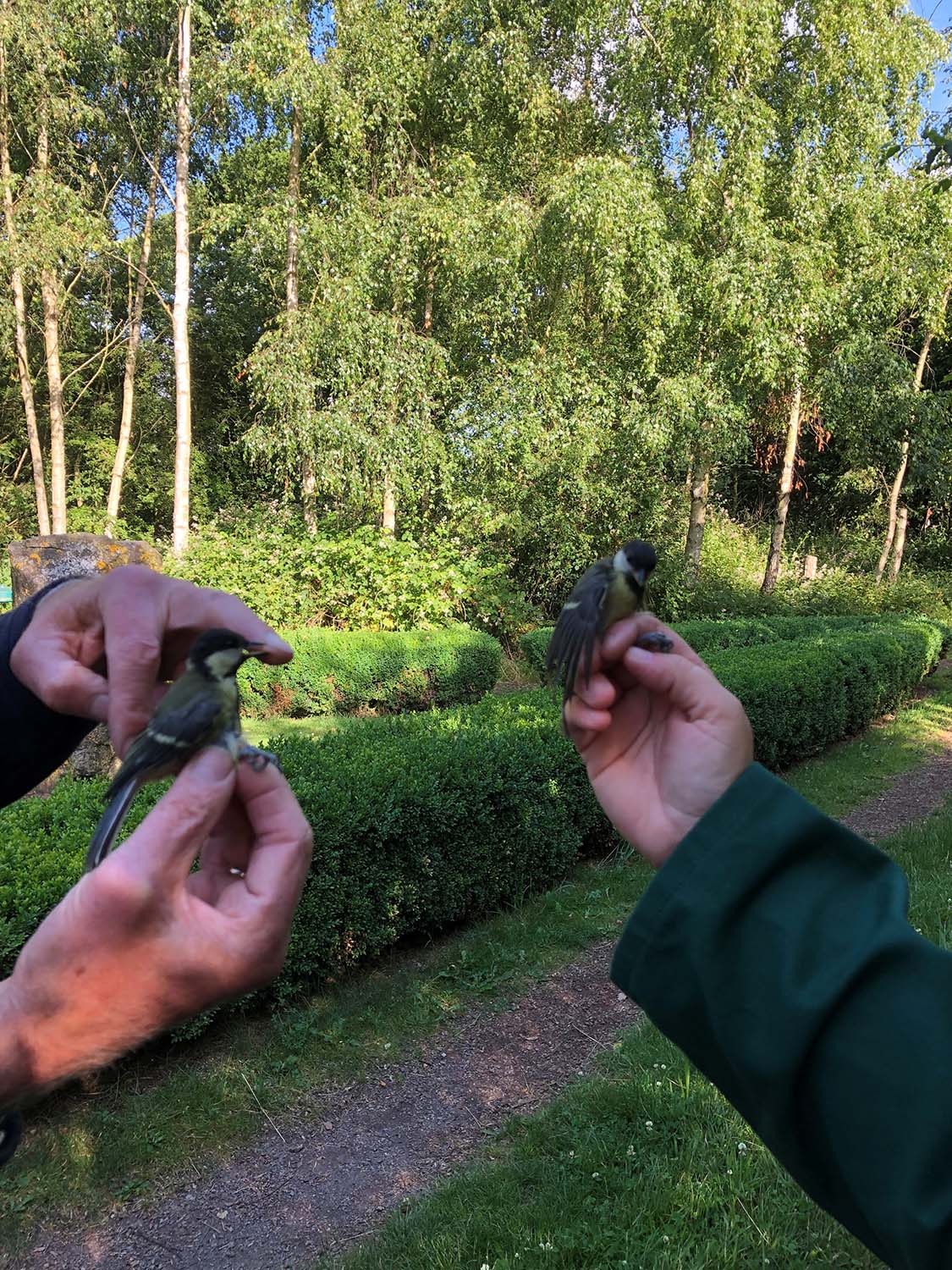On 25th June, a group of volunteers certified by the British Trust for Ornithology returned to Millennium Wood to carry out mist netting. Mist netting is an important tool for monitoring species diversity, relative abundance and population size and is harmless to birds when carried out by trained professionals.
The volunteers put up a total of 7 nets: 5 in the woodland and 2 smaller nets in the gorse and bramble at the edge of the path. Although they didn’t catch many birds, those they did process were unusual and really interesting. First into the same net were 6 newly fledged great tits which may have been from the same nest. All were healthy birds sporting the yellow cheek patches of juvenile birds.
The next 2 birds were adult male and female green woodpeckers showing evidence of breeding. The male has a red patch under the eye whilst the female has a black patch.
Green Woodpeckers have been heard in the wood, but Saturday was the first time the volunteers had actually seen them. A gentleman walking his dog commented that he thinks there are at least 2 pairs in the woods as he often sees multiple birds. Juvenile Green Woodpeckers are much spottier than adults. If anyone sees any, please contact the Parish Clerk; it would be great to know whether the breeding attempt has been a success.
2 juvenile Great Tits and a juvenile Blue Tit were ringed. The photo shows the bird has yellow cheeks suggesting that this Blue Tit hatched this year and had most likely recently fledged the nest.
A juvenile long tailed tit showing brown rather than black plumage (see photo) was a delight to see. Other long tailed tits could be heard close by (presumably siblings and parent birds).
The final 2 birds were recently fledged juvenile Magpies. These are rarely caught. The gallery photo shows their fabulous plumage.
Plants including Common Centaury, Small Stitchwort, Common Mallow, Birds Foot Trefoil, Self Heal, Lady’s Bedstraw and Vipers Bugloss were seen in the wood, including some stunning pyramidal orchids.
Butterflies were numerous and mostly seen around the brambles which were in full flower. Marbled White, Comma, small Skipper, Meadow Brown, Ringlet, Speckled Wood and Small Heath were observed. 3 types of moth were also seen; 5-Spot Burnet, Shaded Broadbar and Latticed Heath.
The volunteers thanked us for allowing them access to this very special place and will return later in the year.
